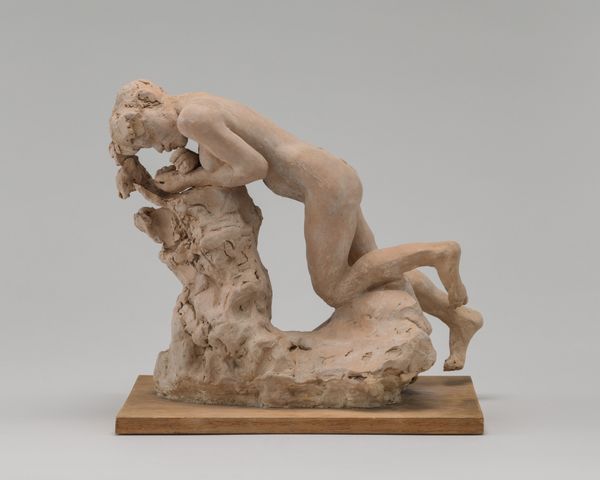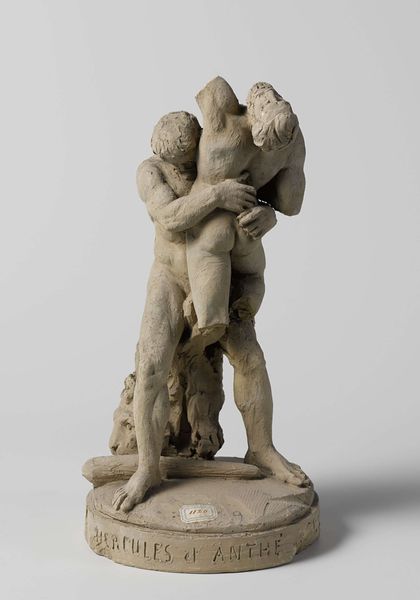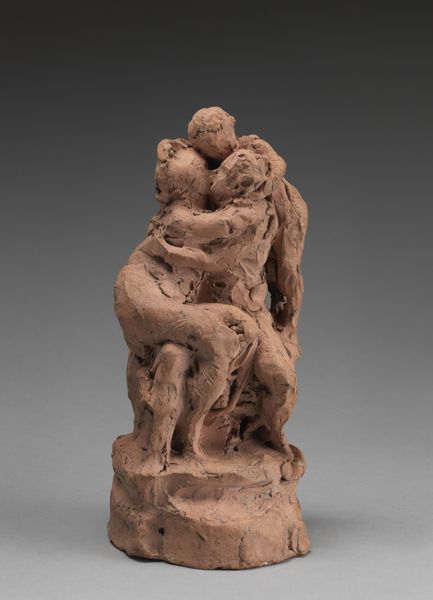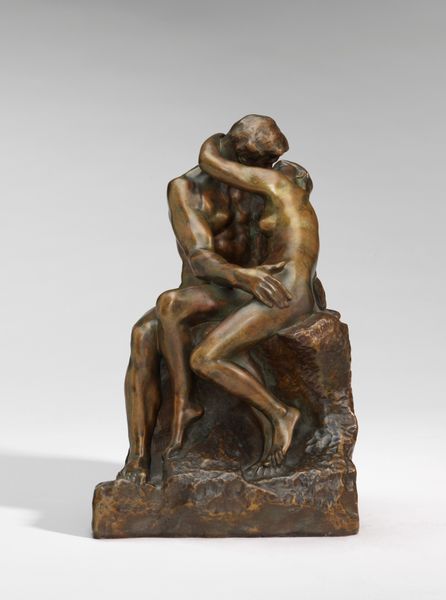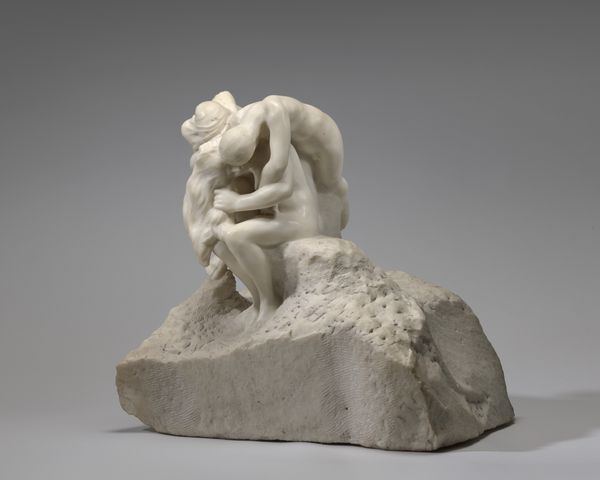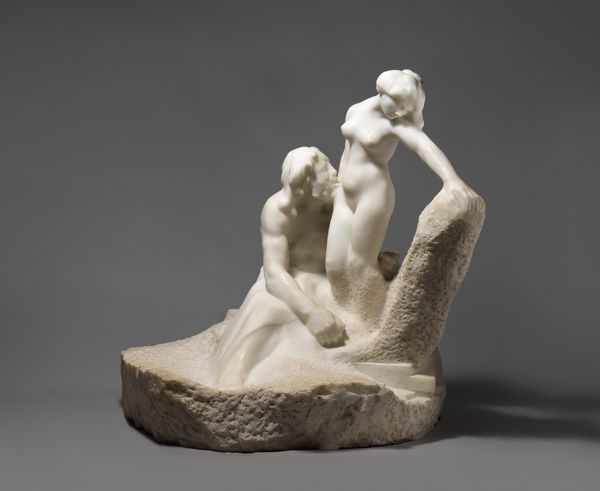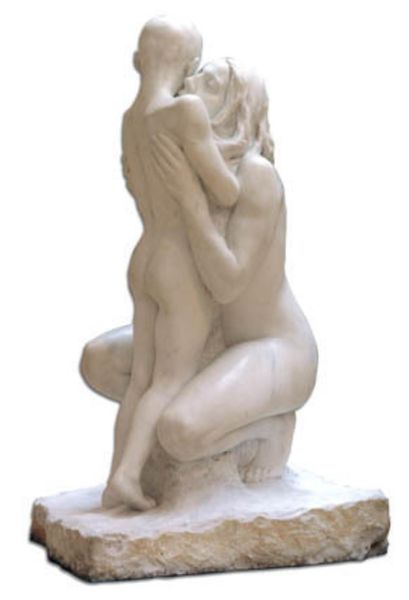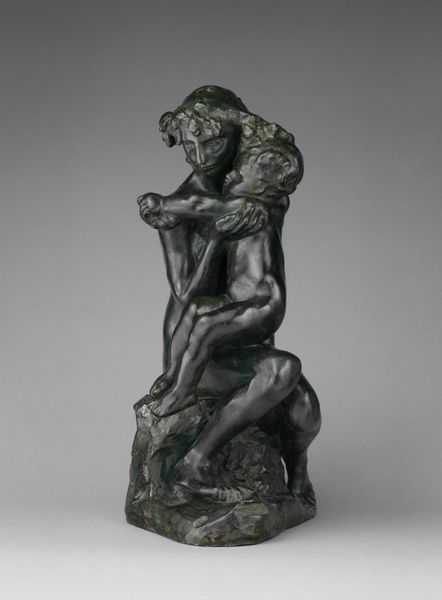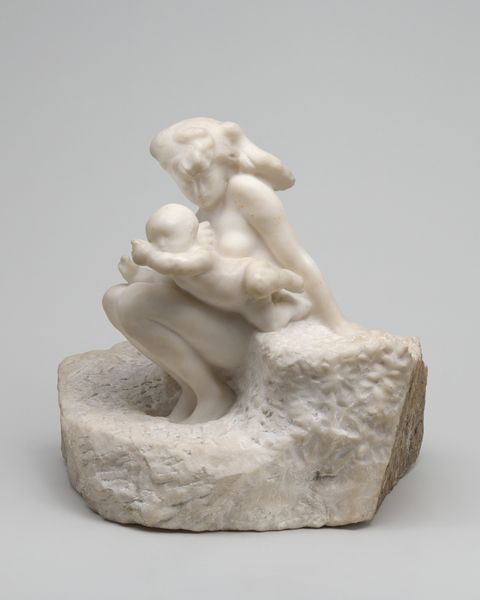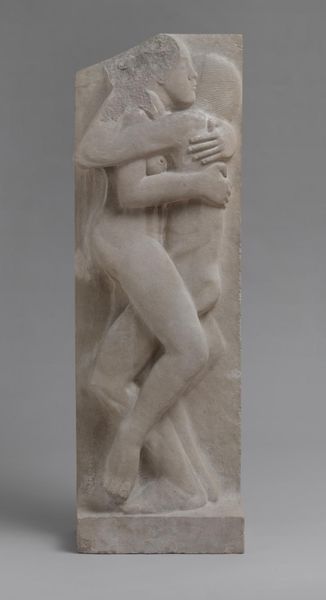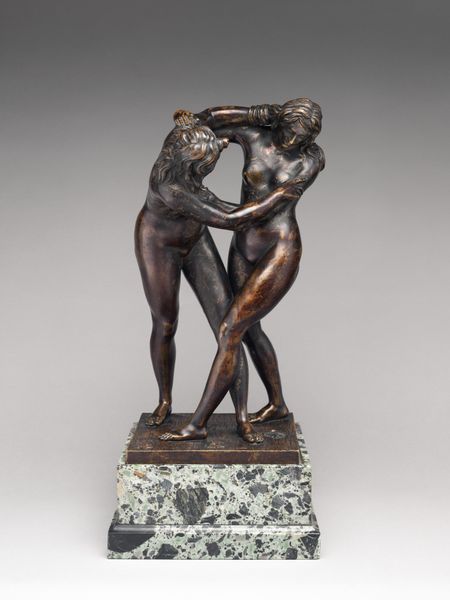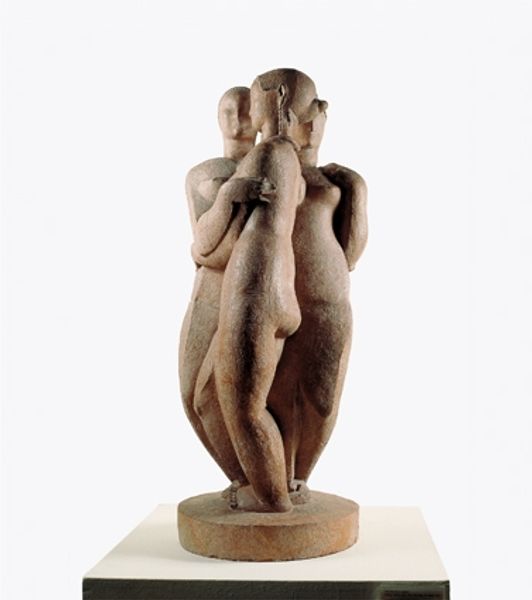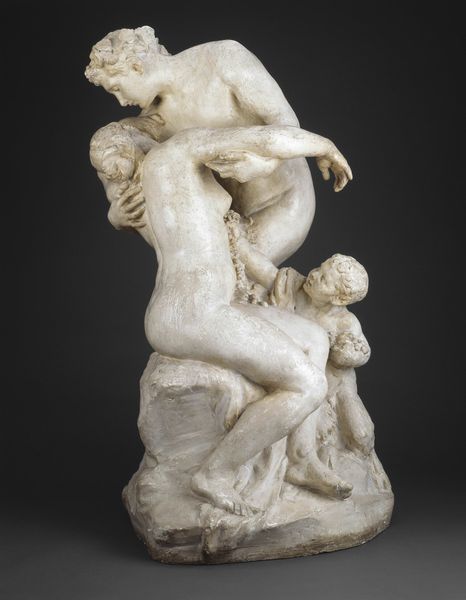
Copyright: Public domain
Camille Claudel carved this marble sculpture, 'Sakountala', towards the end of the 19th century in France. It is based on an Indian myth and a Roman one. We can consider how Claudel's representation of love and desire breaks with the conservative artistic conventions of the time. The eroticism of the embrace and the woman’s active role would have been challenging to the institutions of art in Paris. Remember that, at this time, women artists were often marginalized and faced discrimination in the art world. Claudel had to struggle to gain recognition in a male-dominated society. To appreciate the sculpture fully, we need to consider her biography, and the social and cultural conditions that shaped her artistic production. Research into French art institutions, the reception of non-Western mythology, and the feminist movement would give valuable insight. Art history shows us that the meaning of art is always contingent on its context.
Comments
No comments
Be the first to comment and join the conversation on the ultimate creative platform.
